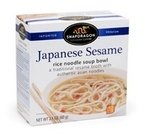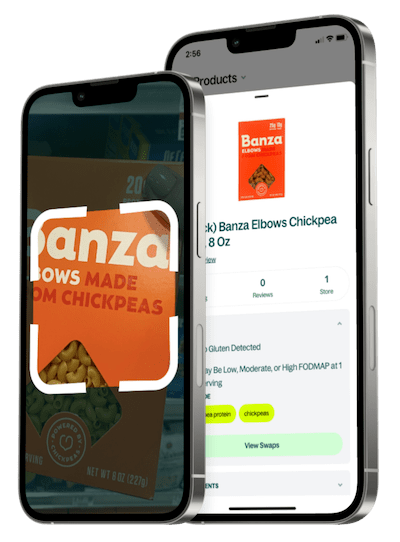Is JAPANESE SESAME SOUP BOWL Gluten Free?

Description
Rich, toasty flavor with a smooth, velvety texture; often described as mildly savory and warming. Commonly served as a starter or light meal, used for sipping, dipping, or pairing with noodles and rice. Reviewers note consistent taste, convenient single-serving portions, and authentic, comforting character, simple reheating and reliable portioning routines.

Description
Rich, toasty flavor with a smooth, velvety texture; often described as mildly savory and warming. Commonly served as a starter or light meal, used for sipping, dipping, or pairing with noodles and rice. Reviewers note consistent taste, convenient single-serving portions, and authentic, comforting character, simple reheating and reliable portioning routines.
Ingredients
RICE NOODLES: RICE, WATER. SEASONING: SALT, MALTODEXTRIN, SOY SAUCE POWDER (HYDROLYZED SOY PROTEIN, SALT), CREAMER (GLUCOSE SYRUP, PALM OIL, SODIUM CASEINATE), CANE SUGAR, DISODIUM INOSINATE, DISODIUM GUANYLATE, PEPPER, GINGER, GARLIC, ONION. SEASONING OIL: SESAME OIL.
What is a Gluten Free diet?
A gluten-free diet excludes all foods containing gluten, a protein found in wheat, barley, rye, and their derivatives. It's essential for people with celiac disease, gluten intolerance, or wheat allergy, as consuming gluten can trigger inflammation and digestive issues. Common gluten-containing foods include bread, pasta, cereals, and baked goods, though many gluten-free alternatives now exist using rice, corn, or almond flour. Beyond medical necessity, some people choose a gluten-free lifestyle for perceived health benefits, though experts emphasize the importance of maintaining a balanced diet rich in fiber, vitamins, and minerals when eliminating gluten-containing grains.
Similar Products
ORIGINAL MULTI-SEED CRUNCHY, BAKED CRACKERS WITH SESAME, QUINOA, FLAX AND AMARANTH SEEDS WITH A RICH AND SAVORY TASTE, ORIGINAL
Campbell's® Condensed Condensed Tomato Soup
MARUCHAN RAMEN NOODLE SOUP CHICKEN FLAVOR
Lipton Recipe Secrets Onion Recipe Soup & Dip Mix
Kikkoman Gluten Free Panko Japanese Style Bread Crumbs - 8oz


